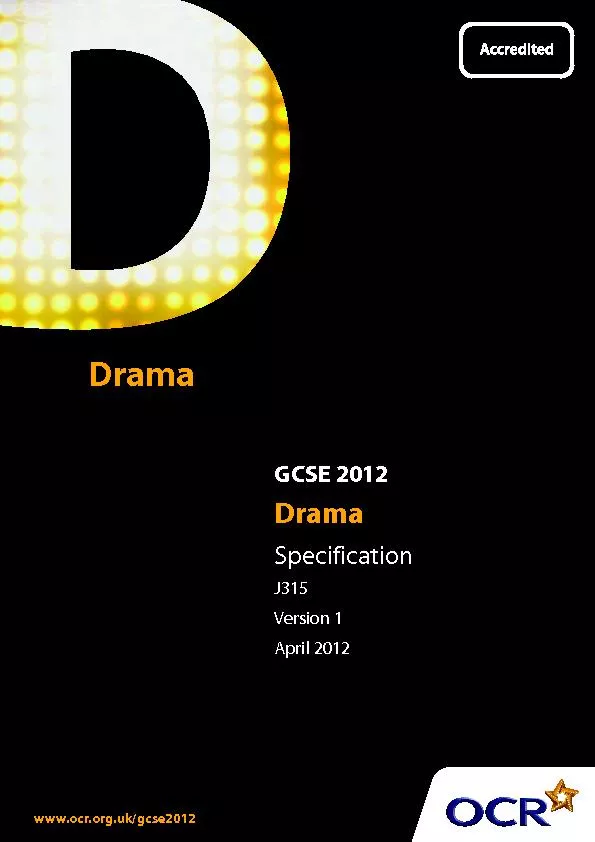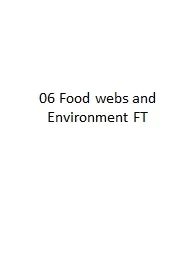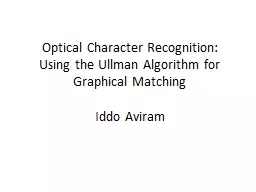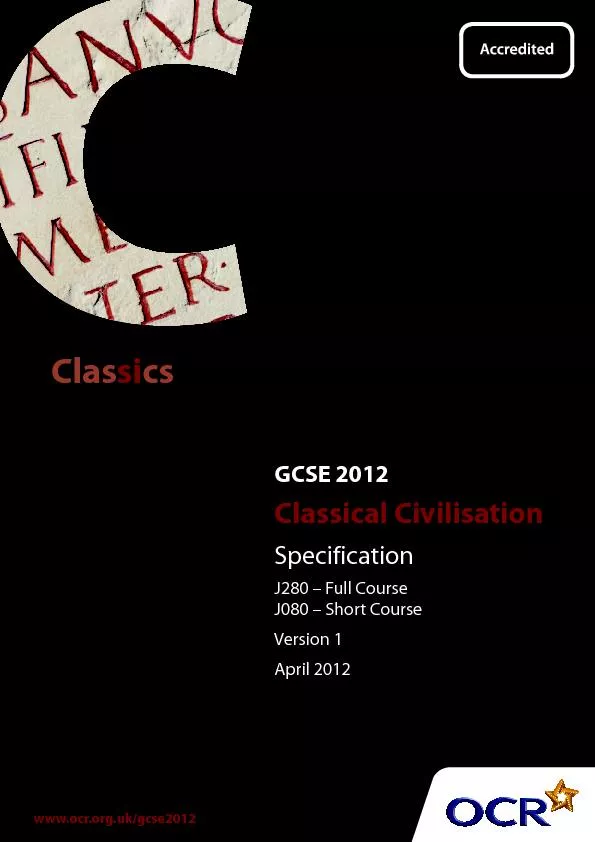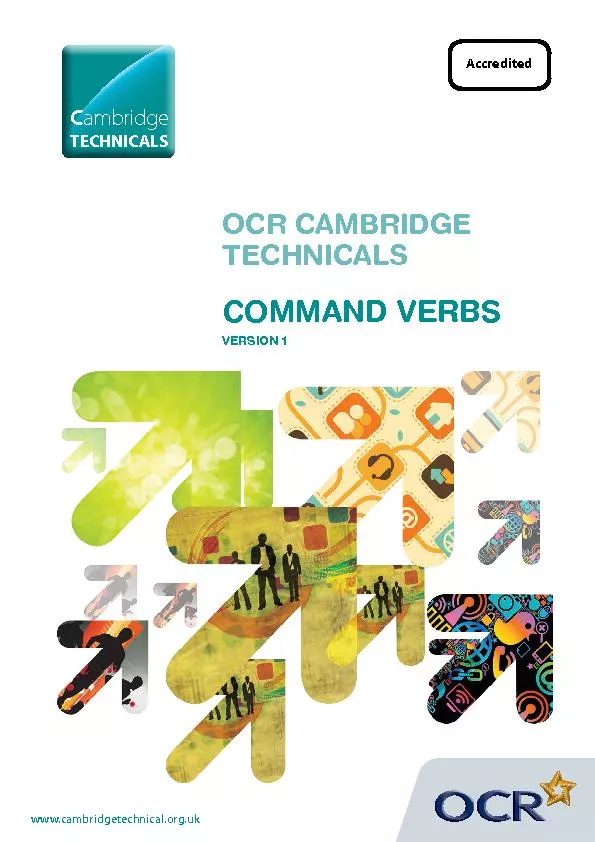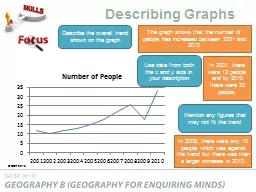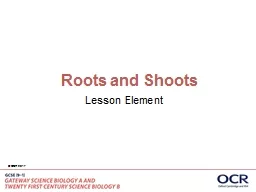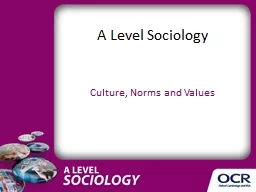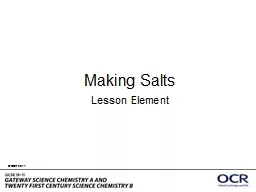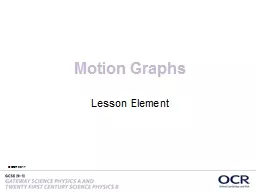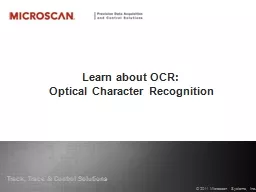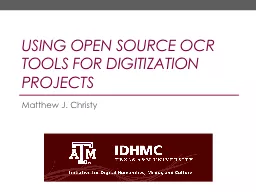PDF-www.ocr.org.uk/gcse2012
Author : conchita-marotz | Published Date : 2016-05-29
GCSE 2012 Drama Specification J315 Version 1 April 2012 Drama A FEW GOOD REASONS TO WORK WITH OCR You can enjoy the freedom and excitement of teaching qualifications
Presentation Embed Code
Download Presentation
Download Presentation The PPT/PDF document "www.ocr.org.uk/gcse2012" is the property of its rightful owner. Permission is granted to download and print the materials on this website for personal, non-commercial use only, and to display it on your personal computer provided you do not modify the materials and that you retain all copyright notices contained in the materials. By downloading content from our website, you accept the terms of this agreement.
www.ocr.org.uk/gcse2012: Transcript
GCSE 2012 Drama Specification J315 Version 1 April 2012 Drama A FEW GOOD REASONS TO WORK WITH OCR You can enjoy the freedom and excitement of teaching qualifications which have been developed to he. OCR qual ifications include ASA Levels Diplomas GCSEs Cambridge Nationals Cambridge Technicals Functional Skills Key Skills Entry Level qualifications NVQs and vocational qualifications in areas such as IT business languages teachingtraining admini Document Image Retrieval. David Kauchak. cs160. Fall 2009. adapted from. :. David . Doermann. http://terpconnect.umd.edu/~oard/teaching/796/spring04/slides/11/796s0411.ppt. Assign 4 . writeups. Overall, I was very happy. 10. 5 . This question is about the use of indicators to measure environmental change.. (a) . Environmental change in rivers can be measured using living indicators.. The number and types of different species can be used to determine water quality.. Using the Ullman Algorithm for Graphical Matching. Iddo. . Aviram. OCR- a Brief Review. Optical character recognition. , usually abbreviated to . OCR. , is the mechanical or electronic translation of scanned images of handwritten, typewritten or printed text into machine-encoded text. GCSE 2012 Classical Civilisation Specification J280 – Full Course J080 – Short Course Version 1 April 2012 Clas si cs A FEW GOOD REASONS TO WORK WITH OCR You can enjoy the freedom and excit TCambridge www.cambridgetechnical.org.uk Accredited OCR CAMBRIDGE TECHNICALSCOMMAND VERBV TCambridge www.cambridgetechnical.org.uk 2 AdaptChange to make suitable for a new use or purpose AnalyseSepara Describing Graphs. Describe the overall trend shown on the graph. Mention any figures that may not fit the trend. The graph shows that the number of people has increased between 2001 and 2010. In 2001, there were 12 people and by 2010 there were 33 people.. Lesson Element. Plant hormones called . auxins. are produced at the tips of roots and shoots. . They are then distributed on the underside if gravity or light are acting upon them. . In the shoots . Culture, Norms and Values. Culture . Is shaped by norms and values. Objectives . To explore sociological ideas about culture. To be able to define culture . To understand what is meant by values and norms and understand how these shape culture. Two Recent OCR Letters. Presented by:. Eric G. Rodriguez. The Girl in College Station. Student had autism and a speech impairment. She was on the cheerleading squad in middle school, when everyone who wanted to be a cheerleader was a cheerleader. . SPLAT!. 2. Work in pairs, with one answer sheet between the two of you. . Each . person in your pair should have a different coloured pen. . You . will be shown a series of equations. For each one you should identify the missing compound on the answer sheet.. Task 1 . Get into pairs having one person facing the board (Person A) whilst the other faces away (Person B). . Person A will be shown a distance-time graph, they must explain the journey that it shows to Person B. . About Your Presenter. Presenting today:. Juan Worle. Technical Training . Coordinator. Microscan Corporate Headquarters Renton, WA. Course . Objectives. By completing this webinar you will:. Understand definition of OCR . Projects. Matthew J. Christy. Intro – Me . Matthew J. Christy. Lead Software Applications Developer at the . Initiative for Digital Humanities, Media and Culture . (IDHMC) at Texas A&M University.
Download Document
Here is the link to download the presentation.
"www.ocr.org.uk/gcse2012"The content belongs to its owner. You may download and print it for personal use, without modification, and keep all copyright notices. By downloading, you agree to these terms.
Related Documents

